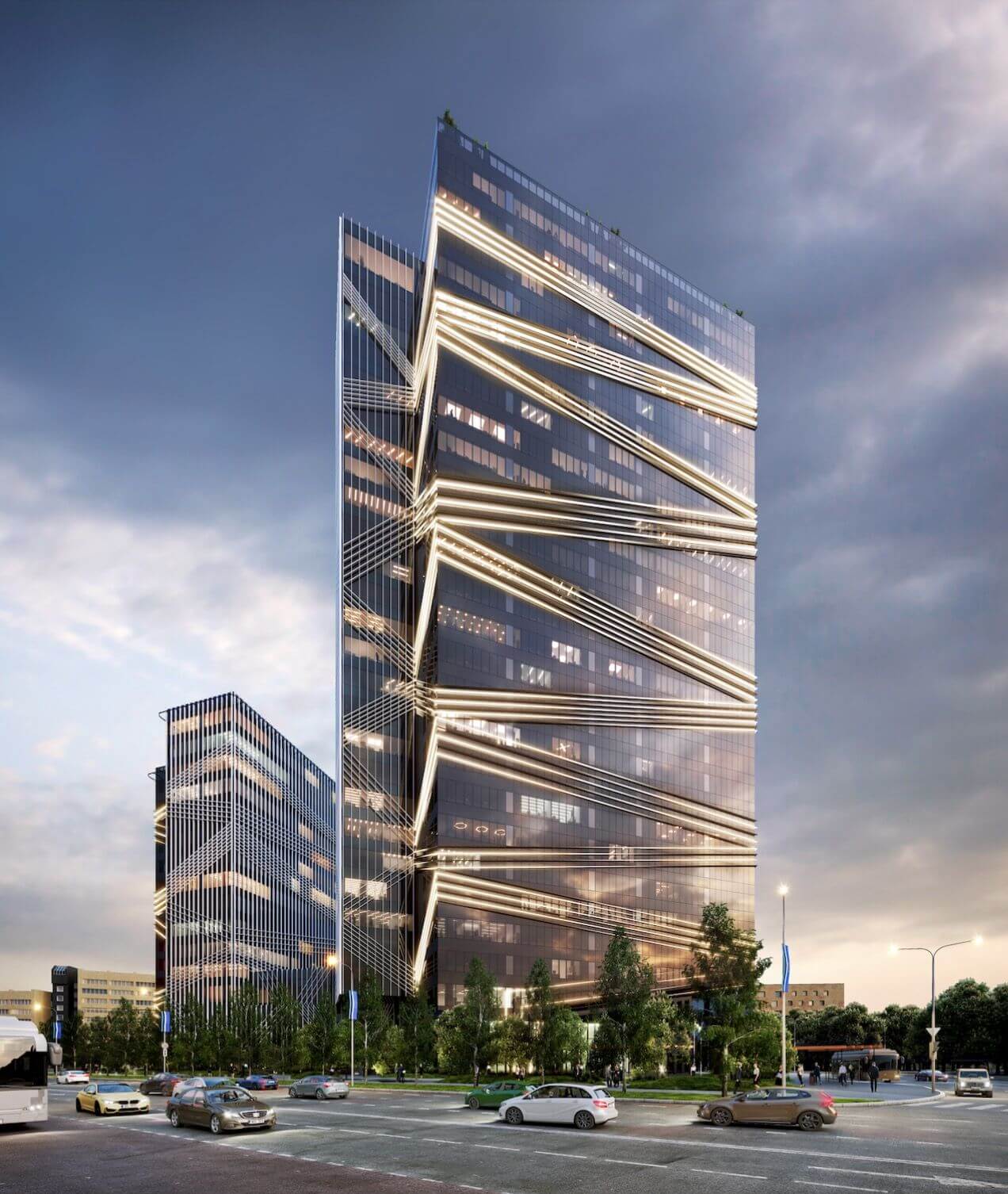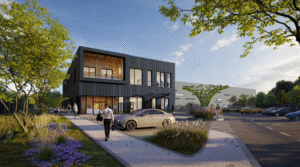Although the shift towards remote work due to the COVID-19 pandemic caused some confusion in the real estate market, it is now evident that the demand for modern and centrally located commercial real estate has not diminished.
“Undeniably, remote work reduces the demand for office space and the volume of space leased by tenants. However, there are many nuances,” says Monica Meldo, a member of the RE Real Estate Board. She points out that remote work does not immediately diminish the volume of leased offices, but rather over a longer period. One reason she cites is that a large portion of office spaces are leased under fixed-term leases. Secondly, Meldo notes that employees nowadays prefer hybrid work, where working hours are divided between the office and a home office. “Thirdly, in the current economic situation, the number of employees in sectors requiring office space is decreasing. However, with economic growth, there is a high probability of an increase in the number of employees, which will increase the demand for office space and act as a counterbalance to the decrease in remote work,” she says.
New and quality
“As a result of the economic downturn, demand for office space decreased significantly last year due to uncertainty. However, the new year has brought some growth in market activity,” reveals Aira Veelmaa, an agent at UUS MAA Commercial Real Estate. “Most companies now have established principles for office attendance and working from home, and hybrid work has not led to a mass exodus from offices. Rather, many companies see the importance of maintaining organizational culture and improving teamwork through physical meetings. It has been understood that physical presence is essential for retaining employee loyalty, maintaining organizational culture, generating better ideas, and fostering collaboration,” says Veelmaa, adding that abandoning offices for cost savings has likely only occurred for a few small businesses.
She points out that companies that leased new office space before the coronavirus crisis are now reducing the size of the space during the new lease period, as the need for space has slightly decreased due to hybrid work. “This brings new and quality office spaces to the market, which in turn may encourage companies renting older spaces to make relocation decisions. Since older spaces often have higher ancillary costs than new buildings, moving to newer spaces may be sensible in some cases, especially if it is possible to manage with a slightly smaller space,” explains Veelmaa.
“The general trend is that reducing office space does not move down in quality class to lower rental rates – the work environment is extremely important for most companies to retain and successfully recruit employees. Often, the cost savings resulting from reducing office space even allows renting a smaller office at a higher rent and thus providing the best working conditions,” confirms Meldo.
“Here it is also important to note that in relation to labor costs, the cost of a workplace in an office is only about 10-15%, so compared to other inputs, the cost-cutting effect here is minimal. Thus, the favorable rental price is currently not the most important factor for companies when renting an office; the quality of the working environment and location are in the foreground.”
Quarterly and Business Districts
Today, tenants increasingly prefer quarters and business districts over individual office buildings. “This allows for providing companies with a more professional service and creates favorable networks and collaboration opportunities with other companies in the area. In addition, these environments offer an inspiring work environment that supports the growth and development of companies,” points out Meldo.
Regarding location, it must be acknowledged that offices in downtown or its vicinity are still valued. “Despite the lower rental prices in more distant locations, such as Mustamäe or Haabersti, it is becoming increasingly difficult to rent offices there,” notes the real estate expert. This trend is supported by the fact that many companies no longer need as many parking spaces – previously, office spaces were rented away from downtown due to good parking conditions.
“On the one hand, the new generation of employees prefers to use public transport or other alternatives to cars, and in terms of access, the downtown location is better, for example, in terms of public transport. On the other hand, the parking conditions are no longer as favorable as before in locations further away from downtown, as large-scale free parking could previously be offered on undeveloped plots designated for development – these have now been fully built,” she says.
Sustainable Solutions
Environmental awareness is also a trend in the commercial real estate sector, so a employee-friendly and inspiring office is now even more important, creating an environment where employees are happy to spend time. “In addition to larger and international companies, which are at the forefront of sustainable solutions, there is an increasing interest in greener and more energy-efficient office solutions,” confirms Kristi Tamm, an assistant to the manager of UUS MAA Commercial Real Estate, citing solutions such as energy-efficient lighting, devices and systems, and the use of renewable energy.
“Solar panels, waste reduction and recycling, water-saving measures, green design and construction using sustainable building materials, and creating a healthy work environment, which includes improving air quality and integrating plants into the office, have become important. Not only do the above reduce the company’s ecological footprint, but they also create a more pleasant and productive work environment that supports employee well-being and the company’s sustainability,” she says. However, Tamm notes that developers are still cautious when building new office buildings, and construction decisions depend on whether anchor tenants are available. “It is expected that construction of several buildings may start this year.”
In terms of commercial and catering spaces, she forecasts that at least the first half of the year will be difficult for companies because consumer confidence is low and purchasing power has declined. “This may also result in vacancies in catering and commercial spaces if the situation does not improve in the coming months,” says Tamm, adding that this year companies are actively looking for new spaces in the warehouse and production space market.
“Due to the decrease in construction prices, it is possible to obtain new spaces at a lower price compared to leases signed years ago in older buildings, whose prices have significantly increased by now. Since the construction volume has decreased, this gives companies the opportunity to find suitable spaces more cost-effectively.”
According to Tamm, it can also be seen that this year will mainly be dominated by contract negotiations. “Next year, we will see the fruits of these negotiations in the form of new buildings. Compared to the office space market, the space needs of warehouse and production companies have remained the same, with a slight increase in interest in larger office spaces, as rooms with better interior finishes are now significantly more cost-effective.”








